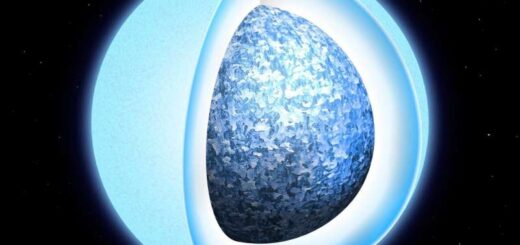King Tut Found to Have a Meteoric Dagger

Ahhh, King Tutankhamun, arguably the most well-known to us of ancient Egypt’s rulers, the inspiration for many a child’s archaeological daydreams and owner of a dagger made from space metal. Wait, what?
King Tut, who reigned in the 14th century B.C.E., was buried according to the customs of the day – with a load of goods along with him. Tut’s tomb was discovered largely intact in 1922 by archaeologist Howard Carter in the Valley of the Kings. The treasures of his burial site have toured the world and been scrutinized for the last century.
And yet, there are still mysteries to be revealed in the artifacts of the boy-king. The makeup of a dagger, which was concealed in the wrappings of the monarch’s body atop his right thigh, has only recently been identified as meteoric in origin.
For decades, archaeologists have debated what metal the dagger’s blade was made from (there’s also an ornately detailed sheath made of gold). An analysis performed in 1970 suggested that the blade’s iron came from a meteorite, but those findings were never published, and it’s unclear what methods the 1970 team used to analyze the composition.
But thanks to a joint effort from Milan Polytechnic, Pisa University and the Egyptian Museum in Cairo, we have conclusive evidence that the blade was made from meteoric iron. The research team, headed up by the paper’s lead author, Daniela Comelli, used portable X-ray fluorescence spectrometry to analyze the composition of the dagger. That examination revealed that the metal of the blade is almost 11 percent nickel, a very clear indicator of meteoric iron. For comparison, quarried iron has a roughly 4 percent nickel composition. The team also observed cobalt traces in the blade, which serves as further confirmation of its meteoric origin.
But before you start a new religion based on the idea that Tutankhamun was some sort of space angel or otherworldly deity, pause and read on. It’s actually pretty common for ancient iron objects to be made from materials with extraterrestrial pedigrees.
Comelli and her team actually used the compositional data of the blade’s metal to identify the very meteorite that’s the most likely source of the dagger’s materials. That meteorite, called Kharga, is an octahedrite fragment. It was found in 2000 near the seaport of Mersa Matruh. Of the known meteorites in a 2,000-kilometer (1,243-mile) radius around the Red Sea, only that one has a composition that matches King Tut’s burial blade.
So while the Egyptian monarch’s burial dagger wasn’t delivered to him intact from some very creative and metallurgically skilled alien race, the craftspeople of ancient Egypt likely selected the meteoric iron because they attributed value, or even divine significance, to it due to its heavenly origin.



 Creators of mankind
Creators of mankind Description of “Tall white aliens”
Description of “Tall white aliens” Where they came from?
Where they came from? About hostile civilizations
About hostile civilizations The war for the Earth
The war for the Earth “Tall white aliens” about eternal life
“Tall white aliens” about eternal life Video: “Nordic aliens”
Video: “Nordic aliens” Aliens
Aliens Alien encounters
Alien encounters The aliens base
The aliens base UFO
UFO Technology UFO
Technology UFO Underground civilization
Underground civilization Ancient alien artifacts
Ancient alien artifacts Military and UFO
Military and UFO Mysteries and hypotheses
Mysteries and hypotheses Scientific facts
Scientific facts


















